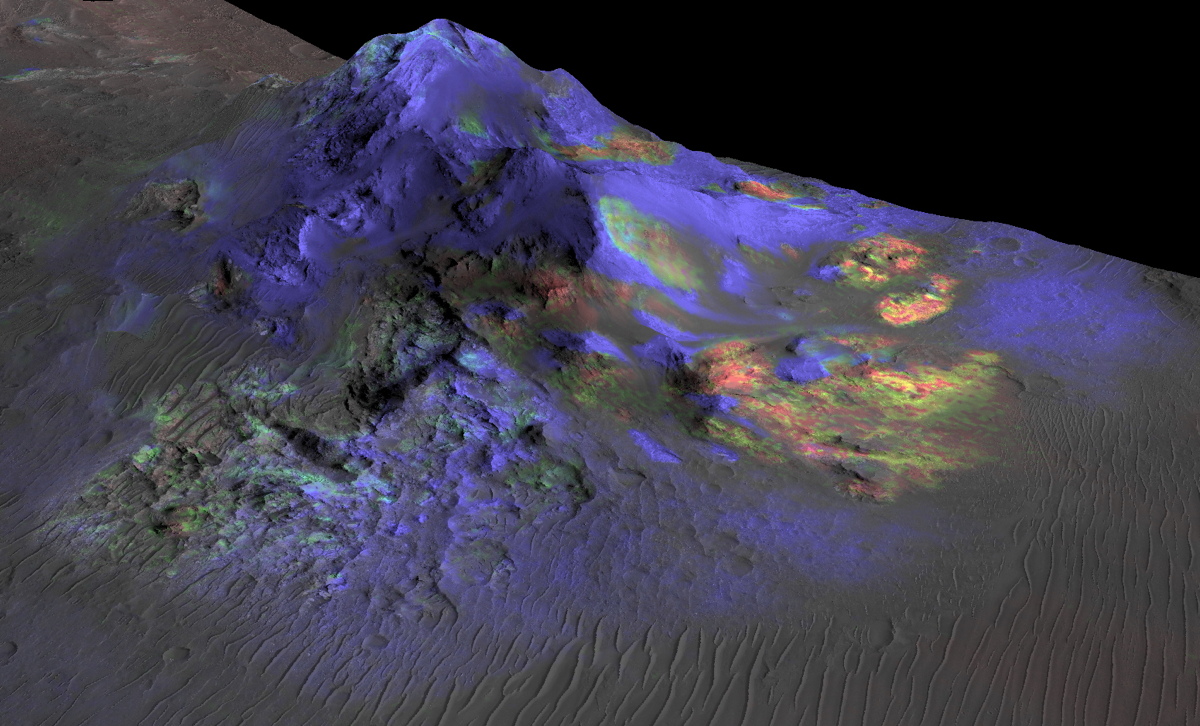Martian 'Impact Glass' Could Potentially Preserve Signs of Life

Newly discovered deposits of glass on Mars resulting from meteorite impacts may be an ideal place to search for signs of Red Planet life, a new study suggests.
This type of glass, called impact glass, forms when a meteorite strikes the surface of a planet or moon, melting the surrounding rock into glass. While the impact itself is very destructive, the glass can preserve "biosignatures," or traces of life that are there before the impact takes place.
"Knowing that, we wanted to go look for [impact glasses] on Mars, and that's what we did here," study lead author Kevin Cannon, a graduate student in planetary geosciences at Brown University, said in a statement. "Before this paper, no one had been able to definitively detect them on the surface."
A 2014 study led by Peter Schultz, a planetary researcher at Brown University, found organic molecules and plant matter in impact glass formed millions of years ago in Antarctica.
"The work done by Pete and others showed us that glasses are potentially important for preserving biosignatures," Cannon added in the statement.
Cannon and fellow Brown researcher Jack Mustard detected the glass using images from NASA's Mars Reconnaissance Orbiter (MRO). Finding the evidence was challenging, study team members said, because from a distance, the spectrum of impact glass doesn't stand out well against the landscape.
So, to simulate what impact glass may look like on Mars, Cannon used powders and rocks of a composition similar to material found on the Red Planet's surface. He placed them in an oven to create the glass, and then measured the spectral composition.
Breaking space news, the latest updates on rocket launches, skywatching events and more!
Using an algorithm, Mustard then found a similar spectral signature using data from MRO's Compact Reconnaissance Imaging Spectrometer for Mars. (Mustard is deputy principal investigator for that instrument.)
Impact glass was found in several locations, specifically on the central peaks of craters that are formed after impact.
One of the landing-site contenders for the Mars 2020 rover happens to include a region with impact glass, researchers said. Called Hargraves, the location is near the Nili Fossae trough, which is a 400-mile-long (650 kilometers) depression. The region is also of interest because the crust may have been created when Mars was a wetter planet.
Follow Elizabeth Howell @howellspace, or Space.com @Spacedotcom. We're also on Facebook and Google+. Original article on Space.com.

Elizabeth Howell (she/her), Ph.D., was a staff writer in the spaceflight channel between 2022 and 2024 specializing in Canadian space news. She was contributing writer for Space.com for 10 years from 2012 to 2024. Elizabeth's reporting includes multiple exclusives with the White House, leading world coverage about a lost-and-found space tomato on the International Space Station, witnessing five human spaceflight launches on two continents, flying parabolic, working inside a spacesuit, and participating in a simulated Mars mission. Her latest book, "Why Am I Taller?" (ECW Press, 2022) is co-written with astronaut Dave Williams.

